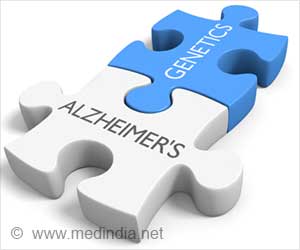New targets and biomarkers linked to Alzheimer’s disease, proven in a study at Emory University, paving the way for potential innovative therapies.

Integrative proteomics identifies a conserved Aβ amyloid responsome, novel plaque proteins, and pathology modifiers in Alzheimer's disease
Go to source).
‘Did You Know?
Healthy habits, such as learning new skills, regular exercise, eating a nutritious diet, maintaining a healthy weight, and getting quality sleep, can improve brain health and lower the risk of cognitive decline and dementia. #alzheimersdisease #proteins #medindia’





Healthy habits, such as learning new skills, regular exercise, eating a nutritious diet, maintaining a healthy weight, and getting quality sleep, can improve brain health and lower the risk of cognitive decline and dementia. #alzheimersdisease #proteins #medindia’
Mechanism of Alzheimer’s Disease - Old Theory versus New Theory
The researchers, Todd E. Golde and Yona Levites, explain the role of amyloid beta deposits, which have long been recognized for their accumulation in the brains of individuals with Alzheimer’s disease. They propose that these deposits act as a support for the aggregation of additional proteins. Given that many of these proteins are associated with signaling functions, their proximity to the amyloid deposits, called as plaques, may be responsible for the damage to brain cells, rather than the amyloid beta itself. This theory was published on August 9 in Cell Reports Medicine.In individuals affected by Alzheimer’s disease, amyloid proteins accumulate, forming sticky plaques that interfere with brain functions and lead to cognitive deterioration. However, the precise mechanisms underlying this process have remained unclear. The widely accepted hypothesis suggests that the accumulation of amyloid beta disrupts communication between neurons and triggers immune responses, ultimately resulting in the destruction of brain cells.
Study Showed Proteins, Other Than Amyloid Plaques, Lead to Brain Damage
Golde, the director of the Emory Center for Neurodegenerative Disease, and Levites, an associate professor at Emory University, proposed a novel hypothesis regarding amyloid beta, a protein typically dissolved by natural mechanisms. Using advanced analytical technologies, they identified and quantified over 8,000 proteins in human brains affected by Alzheimer’s disease and in mice. They found more than 20 proteins that co-accumulate with amyloid beta in both human and mouse brains. They expect to uncover more findings as their research progresses.“Once we identified these new proteins, we wanted to know whether they were merely markers of Alzheimer’s or if they could actually alter the disease’s deadly pathology,” says Golde. “To answer that, we focused on two proteins, midkine and pleiotrophin. Our research showed they accelerated amyloid aggregation both in the test tube and in mice. In other words, these additional proteins may play an important role in the process that leads to brain damage rather than the amyloid itself. This suggests they might be a basis for new therapies for this terrible brain affliction that’s been frustratingly resistant to treatment over the years.”
Despite over a century of understanding Alzheimer’s disease, the search for an effective cure has been slow. It has been marked by phases of initially promising treatments that ultimately failed in clinical trials and ongoing debates about the disease's mechanisms.
Advertisement
It is noted that various forms of amyloid accumulation, beyond amyloid beta, are linked to over 30 human disorders affecting tissues and organs. The recent research reveals a new mechanism in Alzheimer’s disease development, which may potentially lead to innovative treatment targets for other diseases as well.
Advertisement
- Integrative proteomics identifies a conserved Aβ amyloid responsome, novel plaque proteins, and pathology modifiers in Alzheimer’s disease - (https://www.cell.com/cell-reports-medicine/fulltext/S2666-3791(24)00383-5)
Source-Medindia









